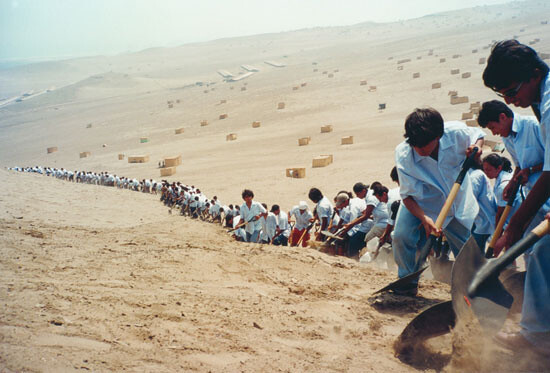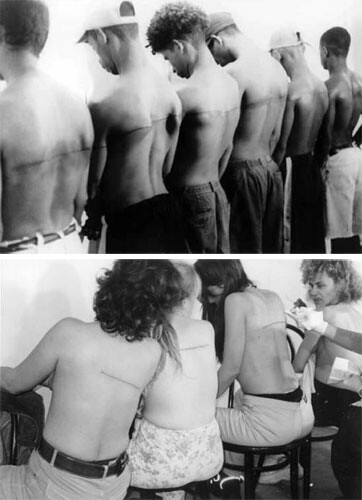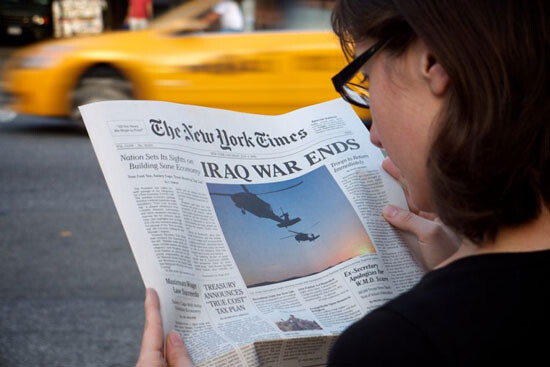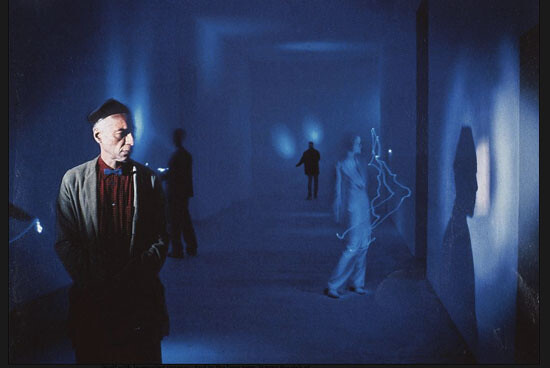1. Shifting the Landscape
Politics without the imagination is bureaucracy, but the imagination is never a neutral category.
The shantytowns built on the outskirts of Lima, Peru, are the product of civil war, economic turmoil, ethnic struggle, and ecological crisis. Populated by underemployed laborers from the city and displaced peasants from the Andes, frequently of indigenous descent, a number of these shantytowns were originally constructed in the 1970s.1 In 2002, one of these shantytowns, named Ventanilla, was home to more than seventy thousand people without plumbing, electricity, paved roads, or other basic infrastructure. The surrounding landscape is desert. To move a mountain on this landscape, Francis Alÿs gave each of five hundred volunteers from Ventanilla a shovel and asked them to stand side by side and slowly work their way up the dune, or as he described it in an interview published in Artforum: “This human comb pushed a certain quantity of sand a certain distance, thereby moving a sixteen-hundred-foot-long sand dune four inches from its original position.”2 This combination of poetic vagueness and precise instruction is central to Alÿs’s storytelling approach to artmaking.
Many of Alÿs projects are about leaving a rumor, a story, or even a myth in the landscape as opposed to fashioning an object. In a piece from 1997 entitled The Rumor, Alÿs went into a town in Mexico and told a story about a man who disappeared from a local hotel. The rumor quickly spread through the town. However, once a police sketch was made—i.e., an accompanying object created—Alÿs ended his involvement in the piece. In The Green Line (Sometimes Doing Something Poetic Can Become Political and Sometimes Doing Something Political Can Become Poetic) from 2005, he casually carried a can of green paint with a hole in the bottom and walked the now-erased original boundary line of the state of Israel following the 1948 Arab-Israeli War.
A Belgian living in Mexico who travels often, freedom of movement is an important component in Alÿs’s artwork. However, his brand of itinerancy—determined as it is by financial resources and post-September 11th legal circumscriptions—is in marked contrast with forced exile and involuntary migration. What interests me about When Faith Moves Mountains is the line that Alÿs’s disenfranchised workers drew in the sand. If anything, it reminds me of the line in Santiago Sierra’s 160 cm Line Tattooed on 4 People … (2000). Unlike dominant strategies in socially engaged art, Sierra’s material practices don’t aim to draw audiences into a vague consensual sociability.3 Rather, viewers are strongly provoked to recognize systems of economic, social, and representational exploitation in which they—meaning, you and I—likely participate, however indirectly.
Upon entering a large room at Sierra’s exhibition in 2000 at Ace Gallery in New York, I saw a set of oversized cardboard boxes, possibly for shipping appliances. Boxes in grids of any sort signal Minimalist art, and particularly the work of Donald Judd, but before I could get very far along this art-historical tangent, the back of my neck began to tingle. It was clear that I wasn’t alone in the room, even though I appeared to be alone in the room. At a certain point, and without it being indicated by noise or movement, I realized that there were people inside those boxes. Sierra’s title for the piece summarizes it succinctly: Remunerated People to Stay in the Interior of Cardboard Boxes. On the way out, I asked the gallery attendant for more information, and she said that Sierra had solicited unemployed immigrants in various situations of financial duress to sit inside the boxes for money, and that some did, but others found the work too degrading, and so only about half the boxes were occupied at any given time. Information, stories, rumors are always unreliable. Nevertheless, the point of my implication in vast systems of exploitation, however inadvertent in this instance, had been made in a way that was both metaphorical and totally real, i.e., more than skin deep.


Perhaps in response to the antagonisms and absolutisms of political strife—from the war between the Shining Path and the Peruvian government to the misnomered “clash of civilizations” in the wake of the September 11th attacks, six months or so before the opening of the Lima Bienal, which commissioned When Faith Moves Mountains—what’s notable about Alÿs’s piece is that while it may be a line drawn in the sand, it’s a shifting one, and one influenced by both environmental and human-social forces. In this sense, it would be interesting to revisit the location of the work in the way scholars, conservators, and art tourists have done with Robert Smithson’s Spiral Jetty (1970), which itself has been the subject of its own set of environmental and human-social forces. Specifically, Spiral Jetty has been threatened with the construction of solar evaporation ponds that would drain the water surrounding it, and also with the proposed building of nearby oil wells, which would potentially spoiled its “viewshed.”4 In other words, the art-world institutionality that Smithson and other Land art practitioners tried to escape by going deep into the American West—that most mythic of places—has been redrawn on a much larger canvas to include multinational corporations and global ecology.
Plenty of artists, designers, and architects are parachuted into sites in order to create works meant to engage with the surrounding landscape (Frank Gehry’s Guggenheim Museum Bilbao being among the most famous examples), but Alÿs turns the landscape into an allegory that is local, global, and—the only thing that might be more powerful than both—climatological. As he says in the Artforum interview: “When Faith Moves Mountains is my attempt to deromanticize Land art … Here, we have attempted to create a kind of Land art for the land-less, and, with the help of hundreds of people and shovels, we created a social allegory.”5 Work and workers are in a battle with the elements, which, again, are never exactly natural—be they economic or environmental. It’s not a coincidence that the words “economy” and “ecology” share the ancient Greek word oikos [οἶκος], or “house.”


2. Poetry
In a world where a fundamental strategy of ruling ideologies is to make themselves appear natural, the absurd can be its own form of critique. “Allegories are, in the realm of thoughts, what ruins are in the realm of things,” Walter Benjamin writes in The Origin of German Tragic Drama.6 Allegories need time to unfold, but all time is scented with death—to use a description in the spirit of Benjamin’s analysis of the German baroque. The danger with allegory is that it so easily turns into myth when lifted out of time and history. Hence Benjamin’s desire to keep allegory directed toward death and ruins.
In a post to the Verso blog about the then-burgeoning Occupy Wall Street phenomenon, McKenzie Wark wrote: “So what the occupation is doing is taking over a little (quasi) public square in the general vicinity of Wall Street in the financial district and turning it into something like an allegory.”7 Wark goes on to equate allegory with the abstract, but that’s not quite right if, per Benjamin, allegories are deeply temporal phenomenon. Wark then compares the occupation to symbols, which, as Paul de Man’s “The Rhetoric of Temporality” instructed those of us raised on deconstruction in the late 1980s, are definitely not the same as allegories.8 What Wark might mean instead is “poetic,” though there are very few words in the English language as misunderstood as this one. From the Greeks and Romans until the rise of Romanticism, poetry was inseparable from the category of rhetoric, which, among other things, meant that poetry was understood to have a social impact. Since Romanticism—and here I’m speaking of a specific European-US tradition—the “poetic” has come to signify the opposite of that. This historical situation—after all, any aesthetics is a product of a particular history, as is the concept of aesthetics itself—was ironically confirmed by the twentieth-century avant-garde’s obsession with non-instrumental art and language. Everything else is kitsch, or so the story goes.
But what deconstruction taught is that all texts are rhetorical constructs—pre- and post-Romantic. This insight is both a blessing and a curse—a blessing because it teaches a rigorous mode of analyzing the internal contradictions, and therefore inherently self-defeating authority, of any text, by which is meant much more than just writing; a curse because when I watch someone like Glenn Beck pontificating, I can’t help but think it’s all a ridiculous rhetorical performance, and that Beck himself knows this.9 This is what used to be meant by rhetoric. And this is also related to what Occupy Wall Street does so well: it builds a self-deflating authority into its own ideology and organizational modes. Its signifiers slide. It foregrounds rhetorical performance in a self-conscious way that at the same time is deadly serious. It believes that bodies are material signs. In other words, it might be a kind of poetry.
People get impatient with the poetic. I’m a poet, and I get impatient with the poetic, as I got impatient with deconstruction for its endless discursive hairsplitting. At this point, I may be something of a reformed Foucauldian, because the only thing left to be privatized is our bodies. Yet if police responses to Occupy encampments around the United States prove anything, it’s that beneath all the soft power is a powerful police arsenal, much of it overfunded in the wake of September 11th, waiting, even eager, to be deployed, however clumsily.
The way in which we are subjects, the way in which we are governed, is more intensely personal now, which both Foucault and second-wave feminism realized almost simultaneously. The slogan “We are the 99%” is an attempt to elude this intensely scrutinized subjectivity, or to put it in the words of the French anarchist collective Tiqqun: “There is no ‘revolutionary identity.’ Under Empire, it is instead non-identity, the fact of constantly betraying the predicates that THEY hang on us, that is revolutionary.”10 In seeking this anonymity, Occupy Wall Street has stirred up debates within the Left between broad-based social movements and identity-oriented political struggle, a dialectic perhaps impossible to resolve. But as anyone who went to Zuccotti Park during the two months that Occupy Wall Street had a physical presence there might have noticed, the core group of protesters did diversify, even if the encampment itself was eventually riven with social, cultural, and class tension to the point that a few of the lead organizers were actually grateful for New York City Mayor Bloomberg’s heavy-handed, middle-of-the-night clearing of the park.
While some might argue that political indoctrination occurs via the state and its affiliate apparatuses, and others might claim that it happens through the corporate media, it’s clear that what’s been hijacked aren’t our thoughts per se but our desires. The service industry is predicated on capturing desire in a way that a manufacturing economy, with its checklist of items to buy, never was. It’s why design is superseding manufacturing (or outsourcing the latter), and why interactivity precedes content, especially in digital media, but increasingly in more traditional commodity culture as well.11The most perverse part is that these developments will be hidden behind the façade of interactivity, of choice, of guided desire. If that sounds depressing, it’s not. There’s an aimlessness and entropy and creative wisdom that even the most efficient systems can never account for or contain. Occupy Wall Street was instigated by what can only be considered an advertisement published in Adbusters, an anti-corporate magazine that doesn’t take ads. By not formulating a set of clear talking points, Occupy Wall Street has allowed people to project their own desires onto it. There’s something poetic in this too.
Placing a story into a landscape has the potential to make a difference, and maybe that difference occurs to the extent that the story resembles a poem. Think of the significant impact made on artistic practice this past decade by Walid Raad’s imaginary and fictional documentaries of the Lebanese Civil Wars. The allegory that Occupy Wall Street tells is still unfolding, even if its archive has become an important concern for preservation. In its very structure, allegory is a combination of critique and hope. I want my physical interfaces to be seamless, but not my intellectual and ideological ones. I’m skeptical of poetry by design because it always has something to sell, even if poetry itself doesn’t sell.


3. Public Space
Another favorite recent artwork of mine also involved a story inserted into a landscape. On the morning of November 12, 2008, commuters in various US cities, though mostly in New York City, were handed 80,000 free copies of a special edition of the New York Times with the banner headline “Iraq War Ends”—except that it was dated July 4, 2009, was only fourteen pages long, and the Gray Lady’s famous motto had been changed from “All the News That’s Fit to Print” to “All the News We Hope to Print.” Otherwise, it looked identical to the New York Times, right down to the layout, typeface, and ads. Article titles included “Nationalized Oil to Fund Climate Change Efforts”12on the front page, “National Health Insurance Act Passes”13 in the “National” section, and “New York Bike Path System Expanded Dramatically”14 in the “New York” section. Ads that carefully replicated the look of their real New York Times counterparts included ones for De Beers diamonds, HSBC, and Exxon Mobil, but with modified text so that, for instance, the De Beers ad read: “Your purchase of a diamond between now and 2026 will help fund the creation, fitting, and maintenance of a prosthetic for an African whose hand was lost in one of that continent’s brutal conflicts over diamonds.”15
Produced by social-art/activist group the Yes Men in collaboration with many other individuals and organizations, this fake New York Times might be understood as a public art project for the information age and its pervasive mediascape. The Yes Men have spent a decade inserting into this fuzzy public sphere sometimes absurd though always historically specific and corporate-focused counter-narratives, which have targeted Dow Chemical, the World Trade Organization, Chevron, and so on. These counter-narratives are frequently performance-based, more interested in concrete as opposed to abstract social bodies, and sometimes involve a subtle camping of male heteronormativity. “Site-specific” used to mean how deeply something was embedded in a place; now it refers to how thoroughly you’re being data-mined. It’s very difficult to define public art when there’s so little public space anymore, and the general public itself seems like an increasingly outdated concept. At the very least, following Nancy Fraser and feminist critiques of Jürgen Habermas’s notion of the public sphere, it might be more useful to think in terms of many publics, alternative publics, and counter-publics.16 In any case, public space is becoming indistinguishable from a contested mediascape; similarly, the commons is becoming virtual as part of the internet era’s version of expropriation.
Occupy Wall Street’s lack of a traditional political platform is directly related to its role as a media intervention, as a meme, as an ideological contagion. This isn’t at all to deny the necessity of more conventional forms of activism or to ignore the fact that it was Occupy Wall Street’s physical presence at Zuccotti Park, its willingness to fill New York City jails, and videos of its bodies being billy-clubbed and pepper-sprayed that significantly raised the movement’s profile. But to then demand from it a coherent political program is to somewhat miss the point of its political imagination and frustration with business as usual writ large across the US political and economic system. The Occupy movement is proposing a different paradigm of viral politics and radical, participatory democracy. At another level, as Glenn Greenwald and others have pointed out, protesters simply want to see the law upheld and enforced, particularly around financial practices.17 Those who think Occupy Wall Street should be the Left equivalent of the Tea Party are welcome to line up some billionaire backers, start their own influential news outlet to serve as a mouthpiece, and handpick some candidates.


I probably wouldn’t have said this ten years ago, or maybe even five, but it’s important to recognize imagination as a social and political force to reconfigure the real. We need to acknowledge how much innate creativity, and its direct relationship to desire, is challenged and threatened by the products of the culture industry, which includes parts of the art world. Confronted with the latest Hollywood blockbuster or Katy Perry release or Damien Hirst dot painting, it sometimes seems difficult to compete.
But of course, it does occur: we make cultures, and the culture industry dips into us as much as we dip into it. According to one report on the earliest days of Occupy Wall Street, it was “‘artistic activities’ that ultimately jump-started the occupation—yoga practices, poetry readings, and the like.”18 Perhaps the first of the Occupy Wall Street occupations was organized by a proto-arts and culture committee, and included poetry and music near the New York Stock Exchange. This took place on September 1, 2011, seventeen days before the initial main protest march. About a dozen people attended, most of whom were arrested.19 Topics such as the elimination of student debt, the right to assemble, and freedom of speech were discussed. In other words, the stage had been set.
As a form of public art, as a kind of social sculpture, Alÿs’s When Faith Moves Mountains, the Yes Men and affiliate organizations such as CODEPINK’s fake New York Times, and Occupy Wall Street each combine critique with a durational, progressive, and performative sense of hope. These projects understand that all art is public, even when it’s not public art. With the relentless privatization of everyday life, whether shared or solitary, the idea of a public going to a public space to see a public work of art is obsolete, and may, in fact, have never been more than a dream. Combined with recent threats to the First Amendment right to peaceably assemble, there’s a paradigm shift occurring in how to reconceive the public sphere. Nevertheless, the public is everywhere, even if many of its physical gathering places have been taken away (especially in the so-called Western “democracies”). Moreover, new publics arise all the time when a previously silenced or disenfranchised group seizes the opportunity to speak, which oftentimes takes a cultural form as much as a traditionally political one. Usually more so. This is part of the politics of the imagination.
A critique of present conditions; the imagination of alternative realities; and collective, sustainable methods seem like a good approach to grounding current artistic, political, and pedagogical practice. At the same time, it’s necessary to continue examining, and self-examining, to find internal contradictions: in critique (for instance, our complicity with power even as we confront it), in hope (the disappointment lodged in every hope, the unhappiness fastened to every joy), and in just how sustainable our practices really are and to what degree they instigate new social formations as opposed to replicating community as exclusion. Any solutions will be temporary, any spaces transitory. Publics are constantly morphing, and the battles they wage with those seeking to contain them are now over technology as much as over territory. This is part of the politics of transmission, in which art and poetry have always played a role.
With their complex, precarious, and improvisational approach to architecture and infrastructure, as well as their alternative economies, shantytowns around the world are increasingly being studied by urban geographers, social theorists, and architectural scholars alike. Some see these communities as creative in their employment of recycled materials, sustainable practices, and new modes of social relations, while others—and here I’m thinking specifically of Mike Davis’s Planet of Slums (London: Verso, 2006)—view these expanding metropolises of the poor as excrescences of global neoliberalism and creative mostly in the unimaginable systems of brutality and exploitation existing within them.
Saul Anton, “A Thousand Words: Francis Alÿs Talks about When Faith Moves Mountains,” Artforum Vol. 10, No. 40 (Summer 2002): 146–147.
Claire Bishop similarly contrasts Bourriaud and Sierra in her influential essay “Antagonism and Relational Aesthetics,” October 110 (Fall 2004): 51–79.
See →.
Saul Anton, “A Thousand Words,” ibid.
Walter Benjamin, The Origin of German Tragic Drama, trans. John Osborne (London: Verso, 1977), 178.
McKenzie Wark, “How to Occupy an Abstraction,” Verso blog, October 3, 2011. See →.
Paul De Man, “The Rhetoric of Temporality,” in Blindness and Insight: Essays in the Rhetoric of Contemporary Criticism, trans. Wlad Godzich (Minneapolis: University of Minnesota Press, 1983), 187–228.
Glenn Beck is an American conservative, television network producer, political commentator, and host of the radio talk show the Glenn Beck Program in the United States.
Tiqqun, This Is Not a Program, trans. Joshua David Jordan (Los Angeles: Semiotext(e), 2011).
Design has become less about objects and more about funneling people toward experiences. In this process, data-mining and the designed environment will become fused to shape people’s movements through space in a way that will make architecture’s historically predominant role in doing this seem feeble in comparison.
Steve Lambert and Andy Bichlbaum, A Celebration, 2008. Quoted from page A1 of the publication.
Ibid., A7.
Ibid., A12.
Ibid., A2.
Nancy Fraser, “Rethinking the Public Sphere: A Contribution to the Critique of Actually Existing Democracy,” Habermas and the Public Sphere, ed. Craig Calhoun (Cambridge, MA: MIT Press, 1993), 109–142.
Glenn Greenwald, “Immunity and Impunity in Elite America: How the Legal System Was Deep-Sixed and Occupy Wall Street Swept the Land,” TomDispatch.com, October 25, 2011. See →.
Sean Captain, “The Inside Story of Occupy Wall Street,” FastCompany.com, October 7, 2011. See →.
Ibid.

